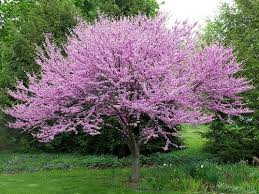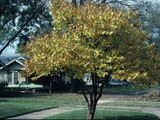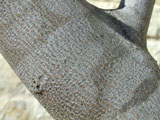by CMG Betty J
 Texas Redbud trees, Cercis canadensis, are a member of the Eastern redbud family of trees. Each variety is especially suited for its local environment and the Texas Redbud is best suited for the limestone soils of central Texas, southern Oklahoma and northeast Mexico. It is drought-tolerant, prefers dappled shade (but also can be found in full sun) and even grows in the thin soils of the Edwards Plateau. A small tree, they grow to 15’-25’ tall.
Texas Redbud trees, Cercis canadensis, are a member of the Eastern redbud family of trees. Each variety is especially suited for its local environment and the Texas Redbud is best suited for the limestone soils of central Texas, southern Oklahoma and northeast Mexico. It is drought-tolerant, prefers dappled shade (but also can be found in full sun) and even grows in the thin soils of the Edwards Plateau. A small tree, they grow to 15’-25’ tall.
Since fall is an ideal time to plant trees in the Hill Country, a Texas Redbud added to the landscape in autumn will bring welcome flowers in early spring. The blooms appear before the leaves emerge in March and April and continue to bloom as the leaves mature. The rose-purple flowers are about ½” wide and grow in clusters along the branches.

The glossy leaves are either heart-shaped or kidney-shaped with slightly wavy edges and occasional hairs on the underside. The 4” long seedpods are reddish purple and remain on the tree into winter. The deciduous leaves turn red or gold in the fall. Redbud bark is gray and smooth with reddish streaks and becomes scaly as the tree ages.
 A TexasRedbud tree can be a showy, attractive accent or understory tree. It only requires low to medium amounts of water and is reliably drought and cold tolerant in its appropriate range. The flower nectar is a favorite of butterflies, bees, moths and other insects. The leaves are sometimes browsed by deer and its seeds are eaten by granivorous birds. It is the larval host to Henry’s Elfin butterfly.
A TexasRedbud tree can be a showy, attractive accent or understory tree. It only requires low to medium amounts of water and is reliably drought and cold tolerant in its appropriate range. The flower nectar is a favorite of butterflies, bees, moths and other insects. The leaves are sometimes browsed by deer and its seeds are eaten by granivorous birds. It is the larval host to Henry’s Elfin butterfly.